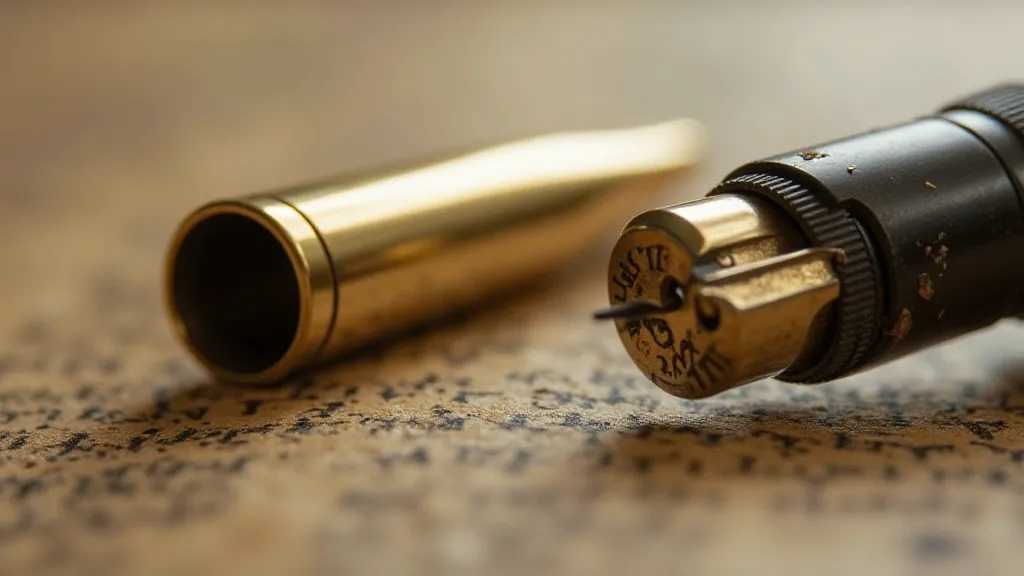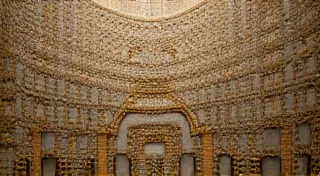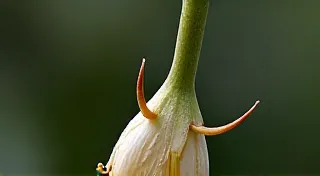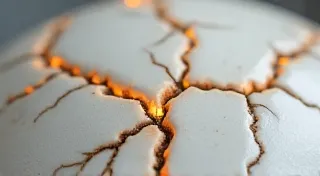From Relic to Revelation: Unlocking the Secrets Within a Restored Pen
There's a certain melancholy that clings to antique objects. They whisper of lives lived, stories told, and moments captured—often lost to the relentless march of time. And few objects hold this resonance quite like a vintage calligraphy pen. More than mere writing instruments, these pens are tangible links to the past, each scratch and imperfection a testament to the hand that held it and the words it crafted. The process of calligraphy pen restoration isn't just about bringing back functionality; it’s about resurrecting a piece of history, allowing us to eavesdrop on the conversations of generations past. It’s about uncovering a silent narrative etched into metal and sometimes, fragile early plastics.
I remember the first pen I truly restored – a Conway Stewart 58 from the 1930s. It arrived to me, almost forgotten, in a box of estate sale treasures. The nib was stiff, the body covered in a film of grime, and the once-lustrous black chased pattern almost completely obscured. Initially, I saw only a project, a challenge to overcome. But as I delicately began the cleaning process, something shifted. I felt a connection, an obligation to honor the craftsmanship and history embodied within this small object. It felt almost disrespectful to just *fix* it; it deserved to be *revealed*.
The Legacy of the Calligraphy Pen: A Historical Perspective
To appreciate the restoration process, we must understand the significance of these pens. The heyday of the fountain pen, and particularly the calligraphy pen, ran roughly from the late 19th century through the mid-20th century. Before the ubiquity of ballpoints and gel pens, the fountain pen was the primary writing tool for professionals, artists, and anyone who valued elegance and legibility. Calligraphy pens, even more specialized, were vital for formal correspondence, important legal documents, and artistic endeavors. Companies like Waterman, Parker, Conway Stewart, and Montblanc (though their calligraphy pens are rarer) represented the pinnacle of pen making, employing highly skilled artisans who meticulously crafted each component.
The Depression and the Second World War significantly impacted pen production. Materials became scarce, and post-war, the rise of cheaper, disposable pens gradually diminished the demand for high-quality fountain pens. Many were discarded, forgotten, or simply lost to time. Often, the damage isn't just superficial; components are broken or missing, requiring significant repair work. For those delving into the world of antique pens, understanding how to approach these complexities is key to preserving these pieces of history. This is where true skill in pen restoration shines.

The Gentle Art of Cleaning: Removing the Grime of Time
The first step in calligraphy pen restoration is cleaning. This isn’t a quick and easy task; it requires patience and a gentle touch. Years of ink, dust, and accumulated residue can obscure the pen's true beauty and hinder its functionality. I typically start with a thorough visual inspection, noting any damage or areas of significant discoloration. Then, I use a series of increasingly stronger solutions, starting with warm, distilled water and progressing to gentle enzymatic cleaners specifically formulated for fountain pens. The cleaning process itself can sometimes reveal underlying damage that needs addressing, highlighting the importance of a meticulous and thoughtful approach.
A common mistake is using harsh chemicals or abrasive materials. These can damage the pen's finish and even weaken the nib. It's always best to err on the side of caution. For stubborn residue, ultrasonic cleaning can be incredibly effective – but again, used with care and with the appropriate cleaning solution. I also find that allowing the pen to soak in warm water, sometimes with a drop of gentle detergent, for several hours can loosen old ink deposits. The key is observation; constantly checking the pen’s condition during the cleaning process. Sometimes, a seemingly straightforward cleaning reveals a fragmented cap or a cracked barrel, indicating a need for more complex repair— truly demonstrating the art of understanding a pen's history through its physical state.
Nib Adjustment: Resurrecting the Flow
Often, the most challenging aspect of calligraphy pen restoration is nib adjustment. A stiff or scratchy nib can render even the most beautiful pen unusable. The nib, a delicate wafer of gold alloy (often with a small amount of iridium), is responsible for delivering ink smoothly onto the paper. Any misalignment or damage can disrupt this process. When a nib presents challenges, it's often a reflection of the skill of the original craftsman—and the passage of time. Understanding the nuances of nib geometry is vital.
Nib adjustment is a nuanced skill, often requiring specialized tools and a deep understanding of nib geometry. It involves carefully manipulating the tines (the two halves of the nib) to achieve the desired ink flow and writing characteristics. This can involve gently spreading the tines, adjusting the breather hole (a tiny hole near the nib’s shoulder), or even correcting minor damage. It's a delicate process – a single misstep can easily damage the nib beyond repair. Some nibs, especially those from earlier periods, present unique geometries that demand an even deeper understanding and a more intuitive touch. If you are contemplating taking on a project, it’s often best to carefully analyze the component’s fragility and the depth of expertise required – and perhaps even research the general principles of weaving new life into a broken-down pen.

Addressing Damage: Repairing the Physical Story
While cleaning and nib adjustment can often revive a pen’s functionality, more significant damage may require repair. Cracks in the body, chipped ebonite or early plastic sections, and broken bands are all relatively common. The approach to repair depends on the type and severity of the damage. Small cracks in the body might be stabilized with appropriate adhesives, while more significant damage might require a complete reconstruction – a painstaking process requiring considerable skill and artistry. Reconstructing a pen isn’t just about physically fixing it; it's about capturing the essence of the original design.
Repairing early plastic pens, particularly celluloid, presents unique challenges. Celluloid is notoriously brittle and prone to cracking. Matching the original color and pattern can be difficult, often requiring a skilled artisan to create replacement parts. Successfully recreating a piece of antique celluloid is both a testament to the artisan’s skill and a vital element in honoring the pen’s history. Sometimes, replicating a broken component requires a deep understanding of material science and a keen eye for detail—a true embodiment of the skill required for reimagining broken pen components in restoration.
Beyond Functionality: The Emotional Resonance of Restoration
The true reward of calligraphy pen restoration isn’t just the restored pen itself, but the connection to the past it represents. Holding a pen that once graced the hand of a lawyer drafting a crucial document, or an artist meticulously illustrating a botanical study, is a privilege. It allows us to glimpse into a world that existed before our own, to appreciate the craftsmanship and artistry of a bygone era.
The pens often hold more than just a history of use; they carry an emotional weight – a silent witness to the moments they helped create. Imagine the letters penned with a beautiful calligraphy pen, the declarations of love, the important business deals, the heartfelt condolences. Restoring these pens isn’t merely a technical exercise; it’s a reverent act – a way of honoring the stories they hold. It’s about letting the pen whisper its secrets once more.

Each restored pen isn’t just a writing instrument; it’s a portal to a forgotten world—a silent storyteller waiting to be heard. The dedication required to preserve these artifacts is vital to maintaining the legacy of these historical treasures, helping guardians of ink maintain these important collections. That, in the end, is the most satisfying revelation of all.





